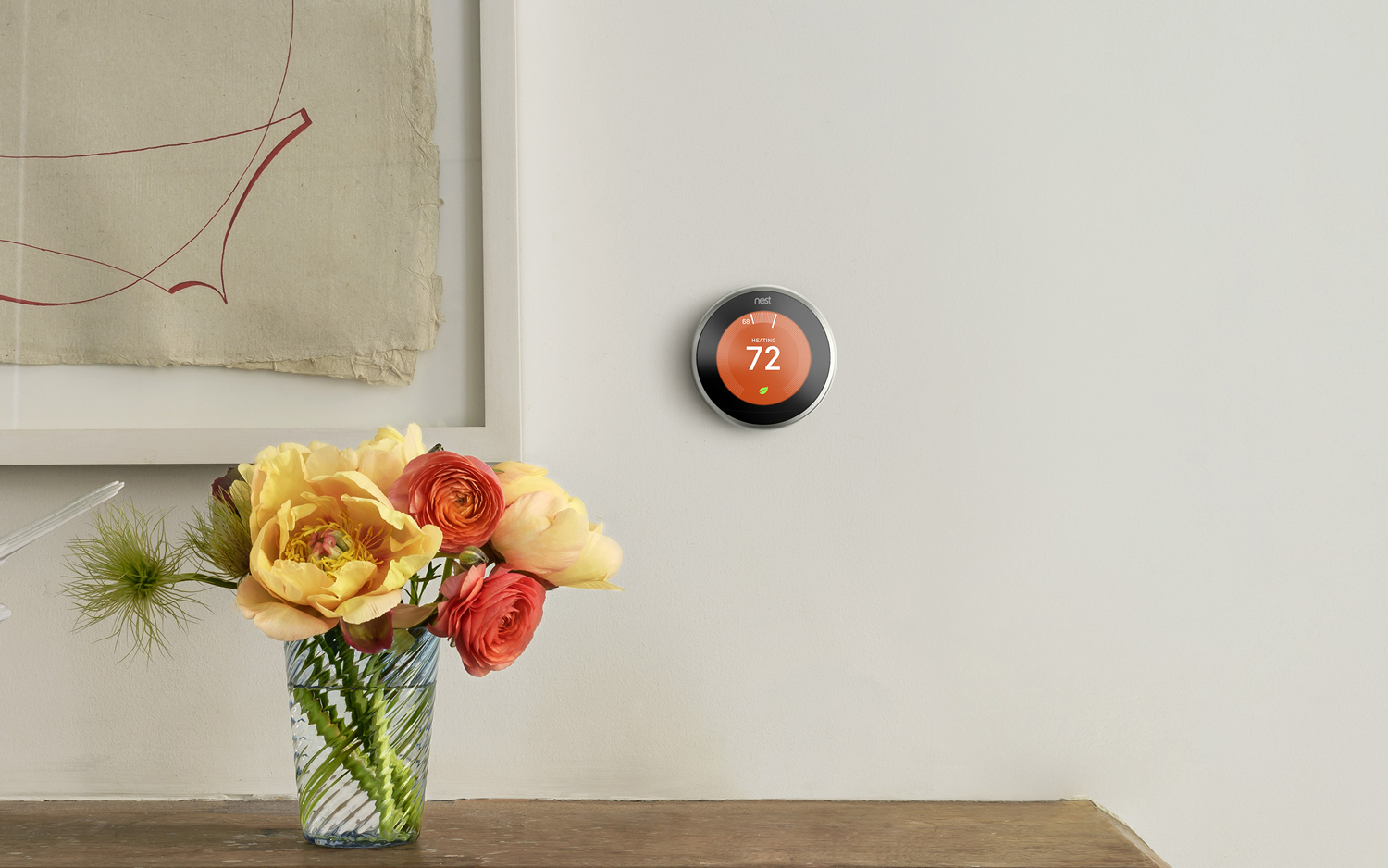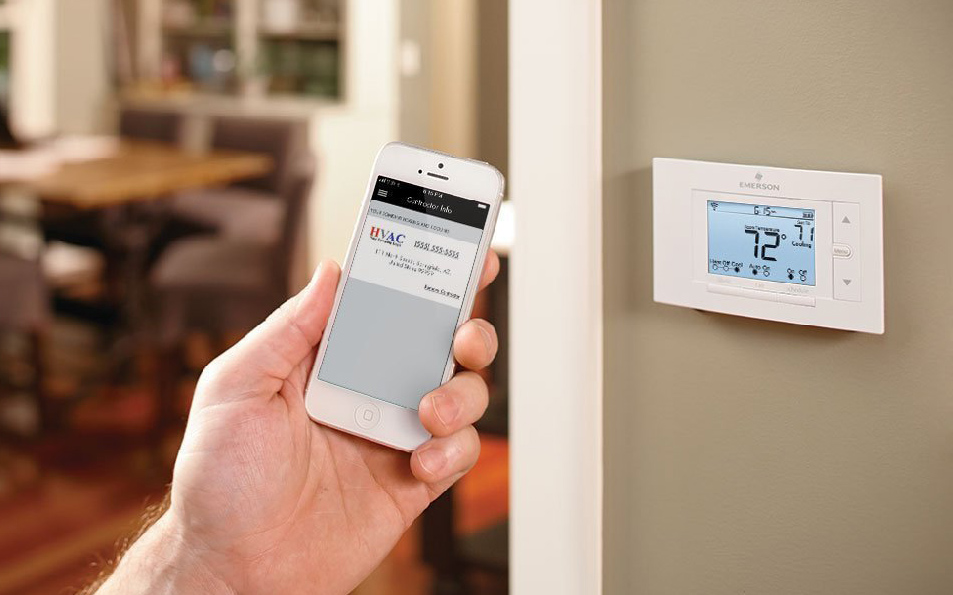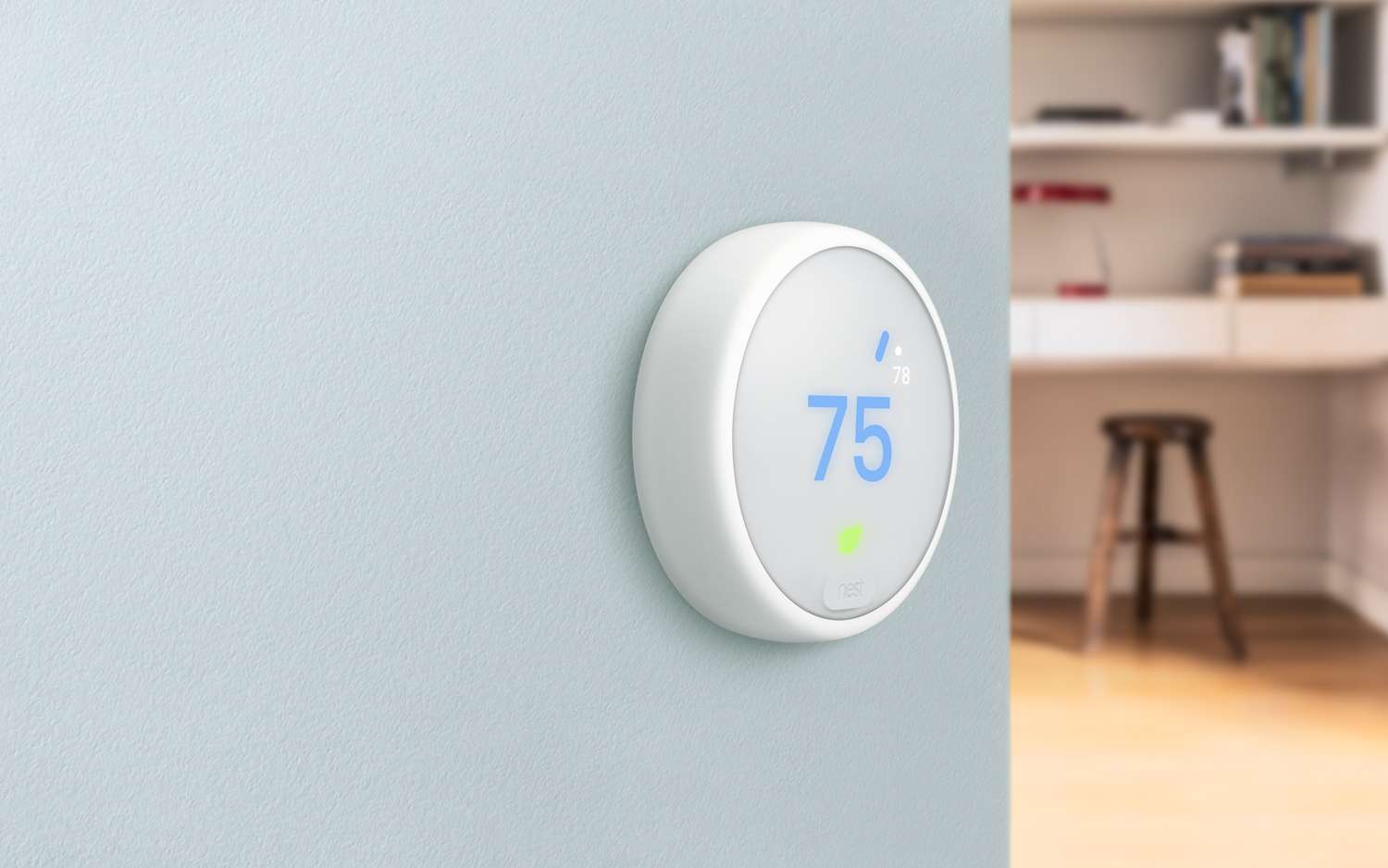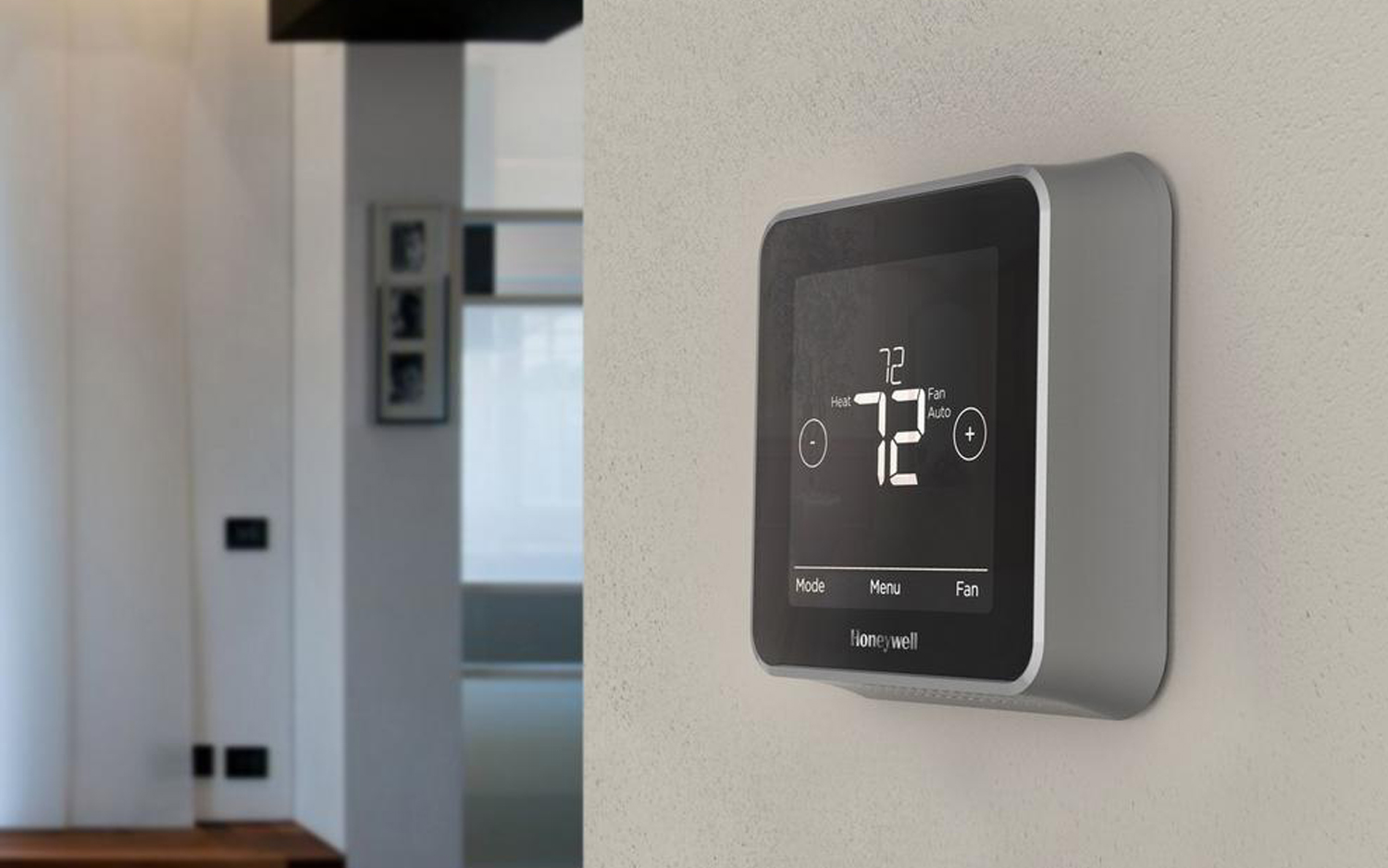Best smart thermostats: Smart thermostat reviews for Nest and ecobee
Everything you need to know about the best smart thermostats from the likes of Nest, Emerson Sensi, and ecobee.

Save time, money, and energy with the best smart thermostats which will help you control the temperature of your home. These clever pieces of tech are WiFi-enabled so you can instantly change your home’s temperature on an app at the touch of a button.
Smart thermostats hit the market in 2007, but nowadays the best smart thermostats do a lot more than just control your heating and cooling system. They also help your home become more energy-efficient. That’s because many of the best smart thermostats turn your heating on and off when your ideal temperature has been reached. And lots also come with eco-friendly modes. Take the Nest Learning Thermostat – for example. This clever gadget studies your preferences for a week and observes when you change the temperature in your home. It can also track the weather forecast where you live and produces a monthly report which could help you save more energy in your home.
When looking for the best thermostat, be sure to check the warranty as well as the installation times. Another important aspect to check is its compatibility with your current thermostat, especially if you have a high line voltage smart thermostat. Many of the best smart thermostats have an online compatibility checker to make sure the smart home tech works with your HVAC system.
Price-wise, you can expect to pay anywhere from $100 to $250 for the best smart thermostats. The top-tier smart thermostats come with voice control, a lengthy warranty, and additional extras. But you can find great smart thermostats without having to pay a top-tier price.
Keep reading to discover our smart thermostat reviews. Or, if you would like to find other smart home technology buys, check out the best smart locks or the best smart lights.
1. Nest Learning Thermostat: Best overall smart thermostat
Why you can trust Top Ten Reviews

Reasons to buy
Reasons to avoid
The Nest Learning Thermostat saves energy by studying your preferences for a week. It monitors light and movement around it and observes when you change the temperature or schedule.
It also tracks weather near your home and gives you monthly progress reports to help save more energy. We like that the Nest works with hundreds of smart home products such as Amazon Alexa and August Smart Lock. In fact, it works with more smart home products than any other thermostat we reviewed. You can easily control the Nest using its metal outer ring and a mobile app. The app is user-friendly, lets you change settings quickly and has detailed tutorials to help you install the unit in your home.
In our tests, it took around 17 minutes to install the Nest Learning Thermostat, which was the quickest installation of any product we tested. This thermostat also comes with a screwdriver, making it slightly easier to install than the ecobee4, our runner-up. The Nest has a built-in battery that sometimes needs to charge after installation. Nest covers this product with a two-year warranty, which is average for most thermostats. (The longest warranty in our reviewed products is three years.) This thermostat costs around $250, making it one of the most expensive products in this category, though we believe the Nest is well worth the cost. The company also makes a cheaper model, the Nest Thermostat E, which offers many of the same features but supports less heating, ventilation and air conditioning equipment, and doesn't have as many design options.
2. Emerson Sensi: Best value smart thermostat

Reasons to buy
Reasons to avoid
The Emerson Sensi keeps things simple by leaving out some energy management tools that make Nest and ecobee such excellent options, such as automatic scheduling and motion sensors.
While this is a disadvantage in some ways, it makes the Sensi affordable. It costs about half as much as the Nest Learning Thermostat and the ecobee4. That said, the Sensi has many useful features, such as seven-day scheduling, weather information and geofencing. It also works with two of the most popular smart home platforms, Amazon Alexa and Apple HomeKit, both of which let you change the temperature with a simple voice command. We like that the Sensi mobile app is easy to use, with clear controls, though you can't look at usage data to see how much energy you're saving.
While the Emerson Sensi lacks the sleek, modern appearance of Nest and ecobee, it's still quite attractive with its crisp interface. This thermostat is easier to install than most thermostats we tested – only Nest and ecobee were easier to install. To further add to the Sensi's value, Emerson covers it with a three-warranty, which is the longest warranty we've seen on smart thermostats.
- Read our Emerson Sensi 1F86U-42WF review
3. ecobee4: Best smart thermostat for voice control

Reasons to buy
Reasons to avoid
The ecobee4 has two unique features among the thermostats we tested: It's the only model with built-in Amazon Alexa voice controls, and it's the only one that includes a remote sensor in the box.
Amazon's Alexa service lets you adjust the temperature with a quick command, without using the ecobee app or touchscreen. We like the remote sensor because it lets the ecobee4 track temperatures in rooms other than where the thermostat is installed. Like the Nest, the ecobee4 has automatic scheduling features and monthly reports that look at your usage patterns, though there's a little more setup involved whereas Nest's is more automatic. Setting up this schedule isn't difficult, and it has most of the same features as the Nest. One of the best qualities of the ecobee4 is that its onscreen display and mobile app have identical controls, which makes it intuitive and easy to use. You can add this device to a number a of smart home systems, though it doesn't work with as many systems as the Nest.
Our installation tests went smoothly because the ecobee mobile app shows every step and guides you through the entire process. However, the Nest thermostat is marginally easier to install because it includes the tools you need. The ecobee4's three-year warranty is the longest we've seen among smart thermostats, one year longer than Nest's. The ecobee4 ranks among the most expensive thermostats we looked at, though ecobee makes a cheaper model, the ecobee3 lite, without built-in voice controls or an included remote sensor.
- Read our ecobee4 review
4. Nest Thermostat E: Best smart thermostat under $200

Reasons to buy
Reasons to avoid
The Nest Thermostat E takes the best parts of the Nest Learning Thermostat and puts them in a simpler package. Not only is this unit more affordable than the flagship Nest model, it has a unique aesthetic among smart thermostats.
The controls and mobile app of the Nest Thermostat E are virtually identical to those of the Nest Learning Thermostat, making this unit almost as easy to use. The white frosted display is something you won't find on other thermostats and adds to the attractiveness of this unit. By design, the Nest Thermostat E doesn't work with complex HVAC systems that use multiple stages for both heating and cooling, though the simple wiring is one reason the Nest Thermostat E is easier to install than most other thermostats we tested. This unit is $80 cheaper than the original Nest and is the best smart thermostat under $200. The Nest Thermostat E's one-year warranty is shorter than that of most thermostats we tested, which is disappointing considering how excellent everything else is.
- Read our Nest Thermostat E review
5. Honeywell Lyric T5: Best affordable smart thermostat

Reasons to buy
Reasons to avoid
The Honeywell Lyric T5 works with some of the most popular smart home platforms: Amazon Alexa, Google Home and Apple HomeKit. It doesn't have as many features as Nest's and ecobee's thermostats, but is an affordable alternative worth considering.
The Lyric T5 is perhaps the most affordable smart thermostat available, costing around $100. It has some excellent features as well, particularly geofencing, which uses your smart phone's location to determine when to run your HVAC system. Despite its affordability, the Lyric T5 is not nearly as easy use as our value pick: Emerson Sensi, and it took us longer to install than other thermostats we tested. The two-year warranty is average among thermostats, but still shorter than the three-year coverage offered by many competitors. Even though this unit supports popular smart home platforms, the list of systems it works with is less comprehensive than that of Nest and ecobee.
- Read our Honeywell Lyric T5 review
Are smart thermostats easy to install?
Installation was a large part of our testing because we wanted to confirm that it was truly a DIY project. On average, it took about 30 minutes to install each thermostat. We found that thermostats with video tutorials, online compatibility checkers and built-in levels are the easiest to install.
DIY installation isn't difficult when you have a C wire and your pre-existing wiring is long enough to reach the terminals on your new thermostat.
- Common Wire (C Wire) – A missing C wire adds some time to the installation process, and it's vital for powering features like Wi-Fi and always-on displays, as well as for extending battery life. The simplest solution is to choose a thermostat that doesn't need one, like the Nest Learning Thermostat or the Emerson Sensi. However, some thermostats, such as those by ecobee, have an adapter kit that adds a C wire to your system.
- Short Wiring – If your wiring's not long enough, you should replace the wiring with a longer strand, though it can be tough if you haven't fished wire through a wall before. It's best to pay a professional to do it for you. While they’re at it, have them add a C wire if you need one.
Usability
After installing each thermostat, we downloaded its mobile app to study the available features and determine how intuitive they are to use. In addition to our testing, we researched each thermostat to get a better picture of its long-term performance and overall customer satisfaction.
Each smartphone app can control basic functions, such as setting temperatures and schedules. However, the most impressive apps have the same user interface as the thermostat itself – this is one of the best things about the ecobee4, ecobee3 lite and Carrier Cor, since it makes using the features easy.
Since many thermostats’ automatic features work largely on their own, we didn't extensively test them in the mobile apps, but we observed each thermostat's behavior while it was active to see how it performed.
How much do smart thermostats cost?
You can expect to pay between $100 and $250 for a smart thermostat, with the average unit costing around $180. However, some utility providers offer incentives or rebates between $50 and $100 to install a smart thermostat, which can make a smart thermostat more affordable but isn't necessarily guaranteed in your area. Even without rebates, these products can usually save enough money on your energy bills over time to cancel out the higher initial costs.
What to expect from the best thermostats
Before we continue, we should point out there's a small difference between programmable thermostats and their smart peers. Programmable thermostats rely on a schedule you set, with or without a smartphone app. Smart thermostats collect data about your home to make it easier to set schedules, and some even set the ideal schedule on their own. Here's what you can expect from the best thermostats:
Lower Utility Bills
Instead of setting a single, stable temperature as on a traditional thermostat, you can use a programmable thermostat to set a schedule for your home’s temperature at different times of the day. This saves money in both the short and long term by heating or cooling only when it's necessary. All programmable thermostats have schedules, but smart ones make the process of setting them easier in the following ways:
Auto-Scheduling
A smart thermostat builds on your schedule by adapting when your plans change. Some, like the Nest Learning Thermostat, auto-schedule by tracking your habits over time to learn your routines. Eventually, they may pick up on your schedule and preferences so well that you don’t need to adjust them at all. Other smart thermostats don't try to predict your schedule and instead respond to your activities.
Smart thermostats with auto-scheduling create a foundation for their programming by observing your habits and local weather patterns or by asking you simple questions. This works best when a thermostat has at least one of the following:
Usage reports let you know how much energy you use and give feedback on how you can save even more. The best smart thermostats keep a record of your energy use starting the moment you activate them. Some thermostats have icons, like the Nest Leaf, to let you know you're improving.
Motion sensors allow the thermostat to react to events outside of your regular schedule, such as if you come home from work early one day. This is an advantage if you don't interact with your thermostat very often. Unlike schedules and geofencing, however, motion sensors can't make your home comfortable before you arrive home.
Geofencing creates a zone around your house and tracks your smartphone's GPS location to activate home or away modes. This useful feature can adapt to your schedule in a way that sensors and scheduling don't always get right because it knows when you're home or not.
However, sometimes geofencing doesn't work. When we asked Booth about this he said, "There are a lot of variables that play into geofence reliability; everything from the data connection you have on your phone or the carrier you're on, or the location services." As location services improve on smartphones, this feature will become more useful.
Smart Home Integration
Some Wi-Fi thermostat manufacturers include home automation functionality so their products can link to popular smart home devices. For example, a smart lock can activate your thermostat’s away mode when you lock the door, a security camera can record a video clip when someone adjusts the temperature, and a fitness tracker can adjust the heat while you sleep.
If you have a smart home system, make sure the thermostat you want works with it before you make your purchase. Most thermostat makers have a list of compatible smart home platforms on their website.
Using a smartphone app, you can control your system remotely, view usage data and set schedules. All are useful in case you forgot to set an energy-friendly temperature before you left the house.
Rebates
Find out if your local energy company offers rebates before you buy a new thermostat, since some offer incentives for you to install a programmable one, which can help pay for part or all of the upgrade. Your utility company wants you to conserve as much energy as possible, since that allows them to put what you save to use elsewhere. Booth also suggested checking with thermostat manufacturers to see if they have a directory of rebates available in your area.
A Long Service Life
Although new smart thermostat models come out every year, you don't need to replace them often. You can expect most units to last 10 to 20 years under normal conditions. We suggest you replace your smart thermostat when it breaks, when you upgrade HVAC equipment or if the mobile app stops working when a company goes out of business.
Thermostat features glossary
Temperature swing
Temperature swing is how many degrees above or below the set temperature your home needs to reach before the thermostat activates your HVAC system. Models with narrow temperature swings of less than a half degree keep your home the most comfortable, but they run your HVAC system more often, which can wear down equipment and increase your energy bill. A wider swing is more efficient because it allows the temperature to vary more before activating your home’s heater or air conditioner.
Multistage heating & cooling
The thermostat can activate heating and cooling incrementally instead of just turning the system on or off. If one stage isn't powerful enough to adequately cool or heat your home, a stronger stage activates to reach the desired temperature. By using higher blower speeds only when necessary, the system saves energy.
Weather conditions
Knowing the weather conditions near your home can help you save energy. For example, you can use this information on especially hot days to set the air conditioner warmer than normal or turn down the heat on mild winter days. Some thermostats, like the Nest Learning Thermostat, gather this data and use it in tandem with auto-scheduling.
Programmable fans
The thermostat can run your air conditioner's fan to circulate the air in your home, which helps eliminate uncomfortable hot and cold spots. Some thermostats can also run the fan briefly after the compressor turns off, which uses leftover cold air in your system that would normally go to waste.
Remote sensors
One of the latest industry trends is a thermostat with remote sensors you can place in different rooms of the house. These sensors track motion and temperature so your system can tailor its activity based on the room you're in, rather than an unoccupied hallway, which is where most homes have their thermostat.
For a while, ecobee was the only company that made remote sensors for its digital thermostats, which gave the ecobee4 and ecobee3 lite distinct advantages in larger homes. However, the Nest Temperature Sensor shows that other thermostat makers are starting to catch up.
While many other manufacturers make thermostats that support remote sensors of some kind, this functionality is mainly available if you use a smart home hub and the sensors it's compatible with.
Some thermostats can also send you an alert when there's a problem with your HVAC system. This is particularly helpful in extreme climates where HVAC systems regulate heat, cold or humidity to protect your home from damage. The alert helps you catch problems before they get worse.
Warranty
The best programmable thermostats come with warranties of two or three years. However, some manufacturers provide a longer warranty if you have a professional do the installation. For example, the Carrier Cor has a five-year warranty if it’s professionally installed, but only a three-year warranty if you install it yourself.
Support
The best wireless thermostats come with complete customer service, including support reps who can be reached over social media, email, phone and live chat. Because social media support requests are so public, they add a layer of accountability that private communications, such as phone calls, emails and chats, often don't. For example, Twitter is one of the most effective ways to get help with your thermostat because responses are quick and often direct you to the most effective solution.
Sign up to receive the latest news, reviews, buying guides and deals direct to your inbox
John has been researching and reviewing home security and smart home products for Top Ten Reviews since 2013. As well as covering smart home and home security and safety, he also covers other home technology products such as HVAC, garage door openers and more. He enjoys DIY, writing and hiking in his spare time.

